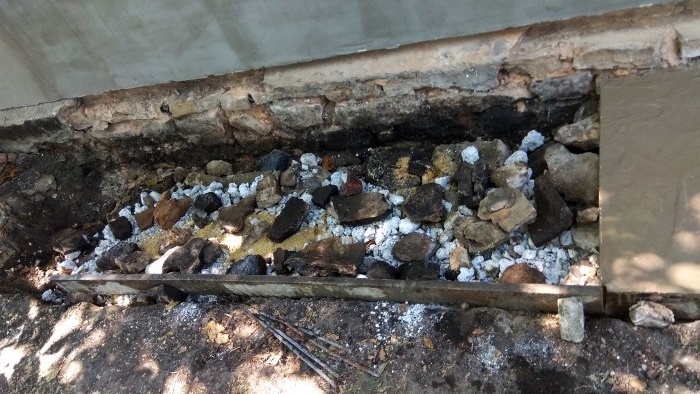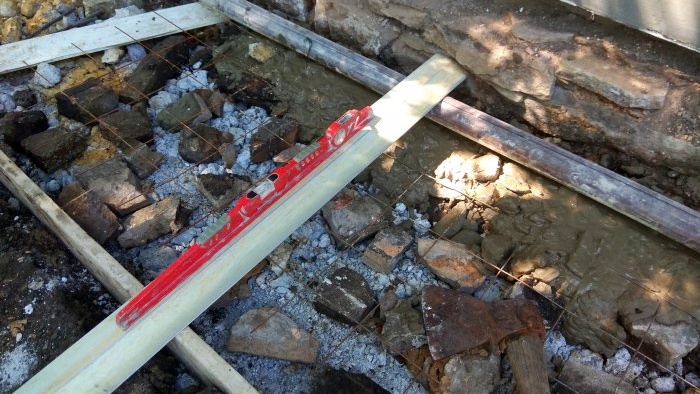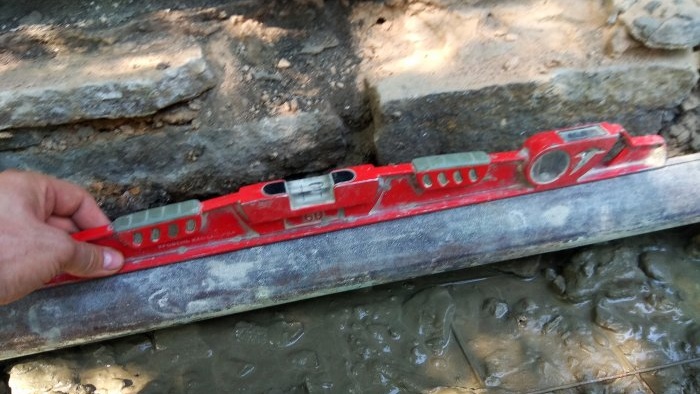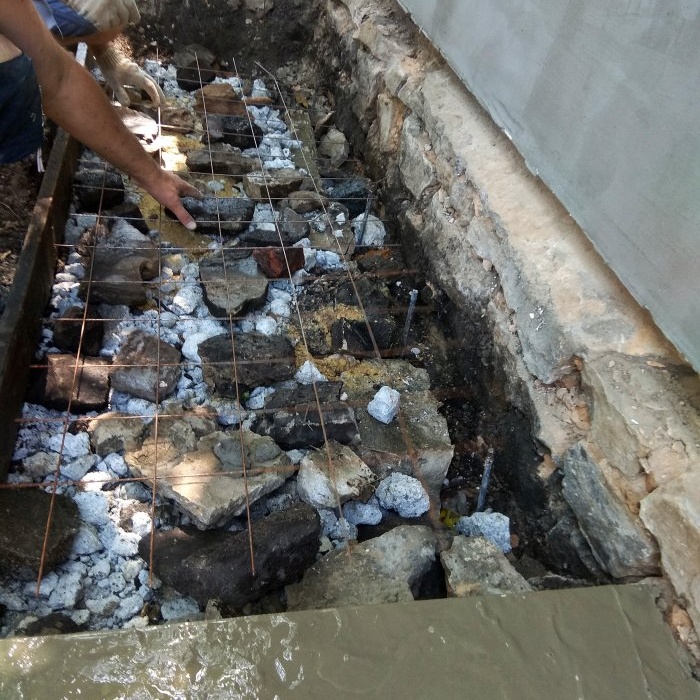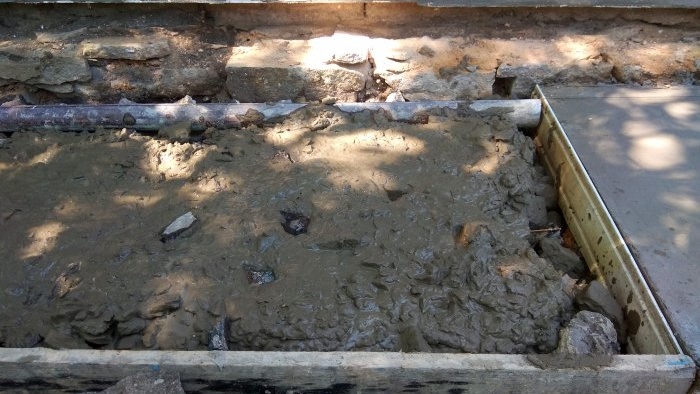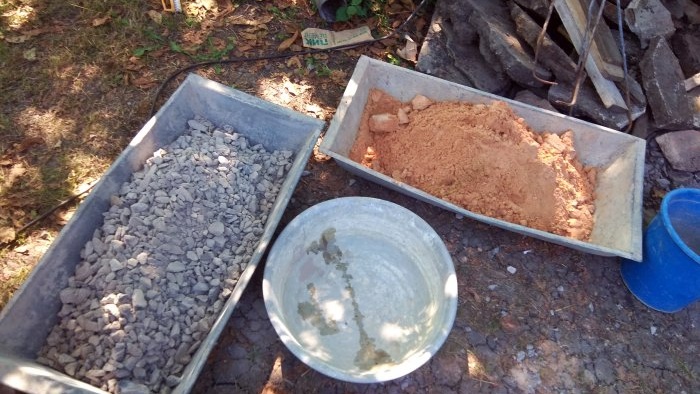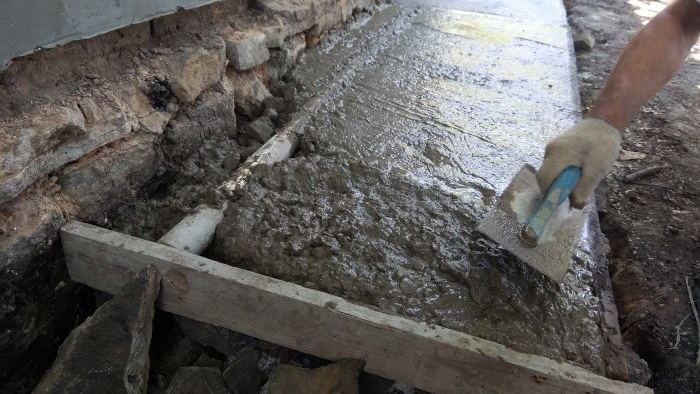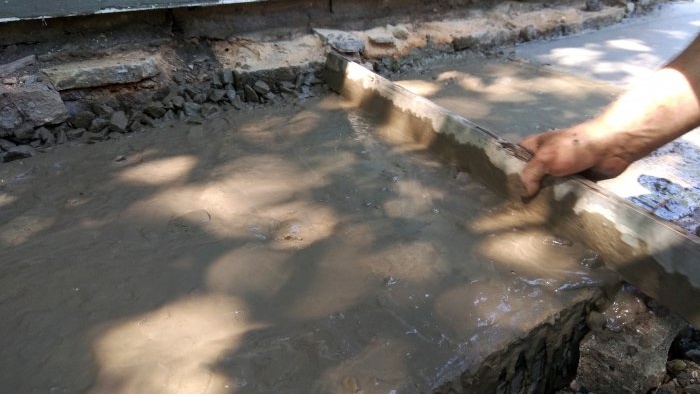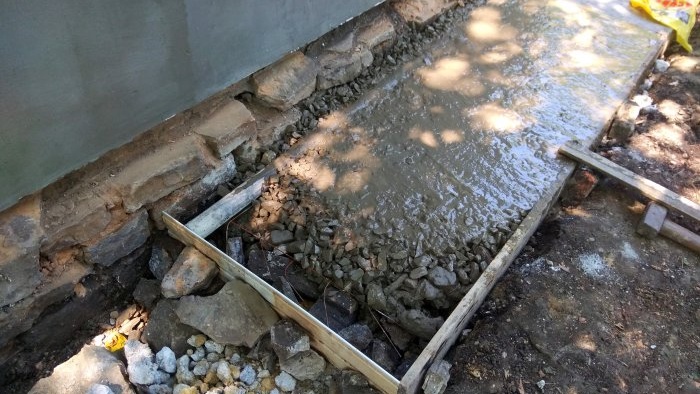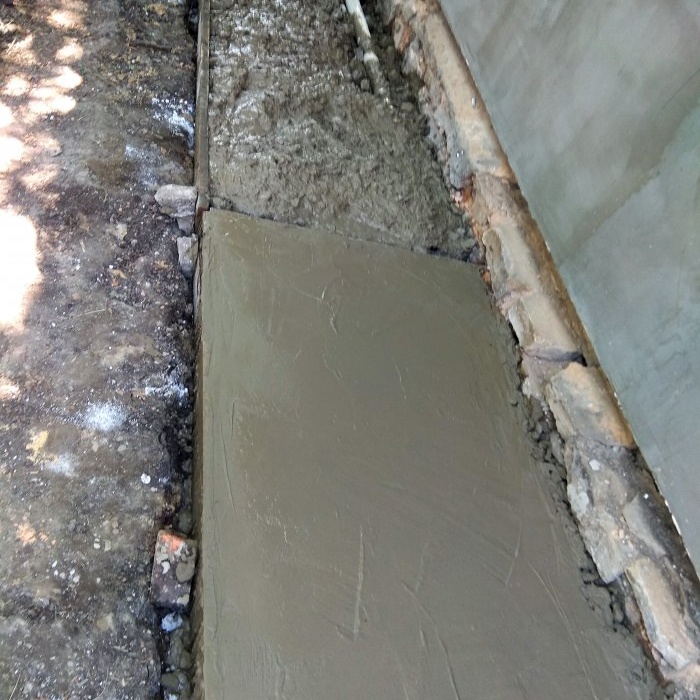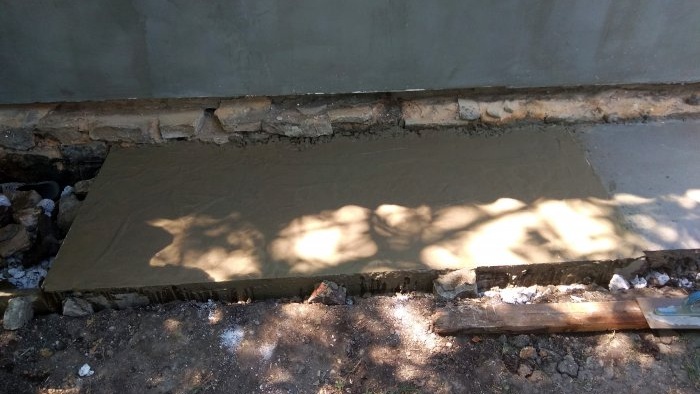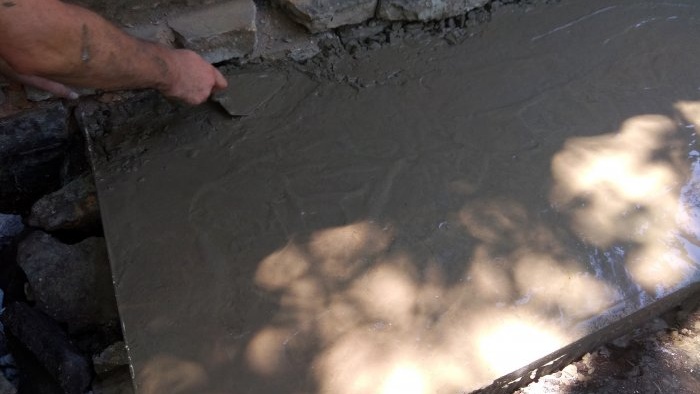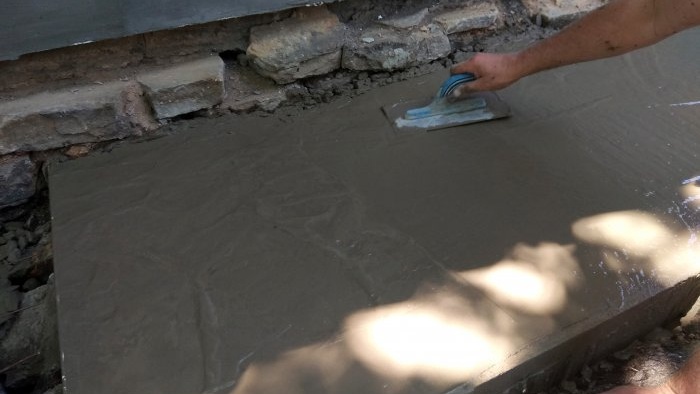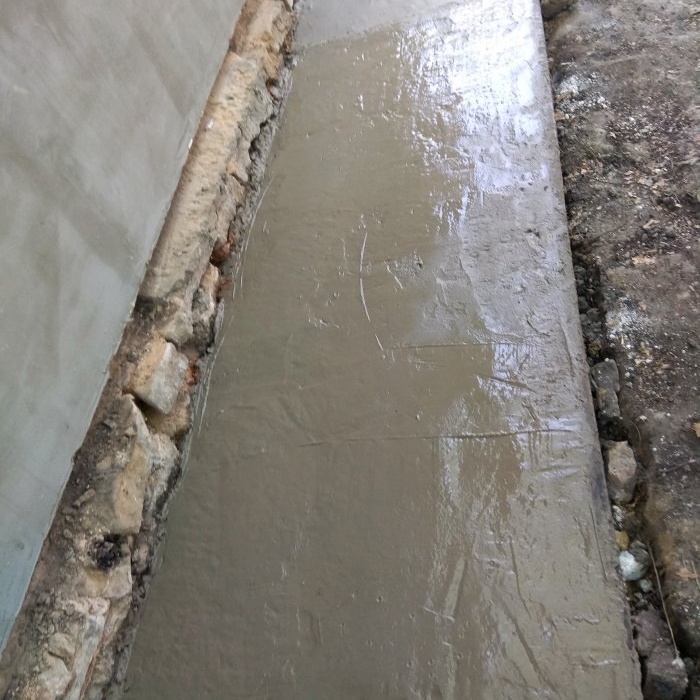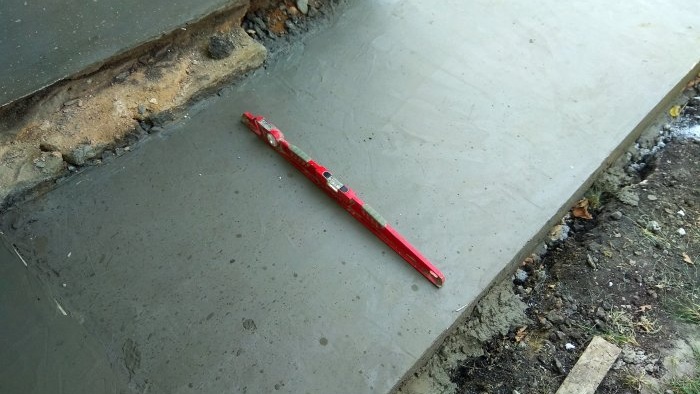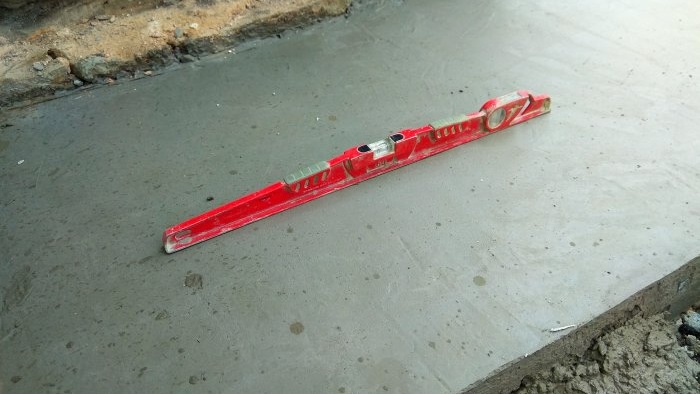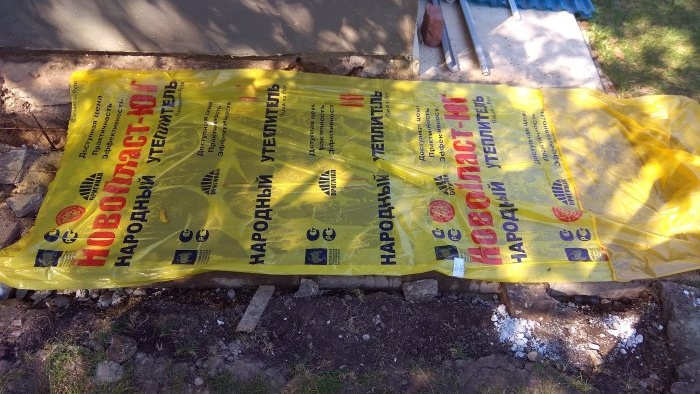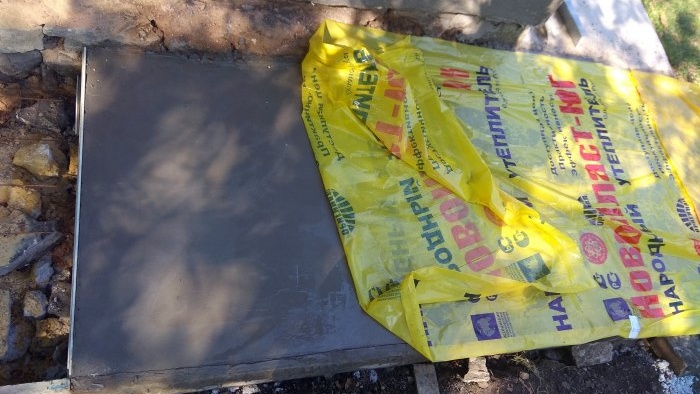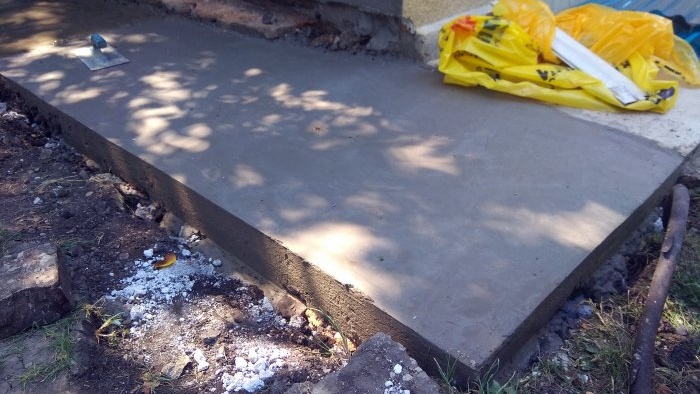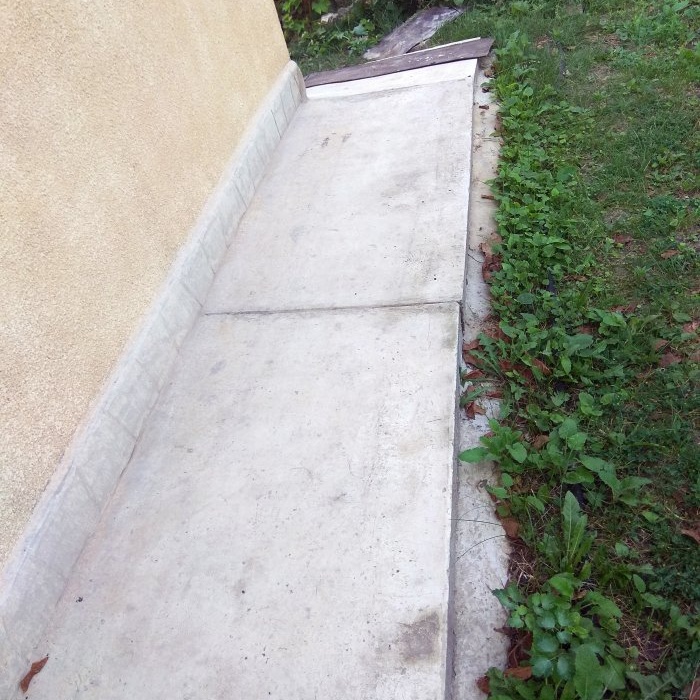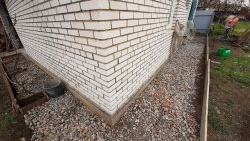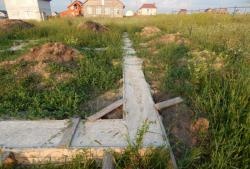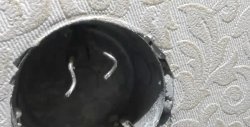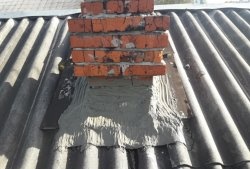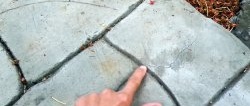Any building, and especially residential buildings, needs a blind area. It is necessary to prevent rain or water draining from the roof from penetrating under the building and harming the foundation. This work is not technologically complicated, so you can do it yourself. Let's look at a step-by-step guide to making a concrete blind area.
DIY blind area around the house
The first stage of work is preparing the territory. The first step is to remove the fertile soil layer. According to the technology, the size of the blind area should be 20 cm larger than the size of the roof overhang. The optimal length of the blind area is 1 m. This size will be suitable both for the path around the house and for protecting the foundation of the building. The depth of the blind area depends on the conditions of the region. According to technology, the depth should correspond to half the depth of soil freezing in winter.
Taking into account the size and depth of the blind area, the top layer of soil is removed, and the roots are also removed. The bottom can be covered with roofing felt or PVC film. To prevent the film from breaking through, the bottom is sprinkled with sand, which compacts well. You can also add a layer of sand on top of the film.A layer of crushed stone or slag is poured on top of the sand. To save money, you can use stones.
Preparation includes the installation of formwork, for which you can use a regular wooden board. It is set according to the level, so that later it can be used to maintain the rule.
It is necessary to take into account that the blind area has a slope to drain water. When the formwork is installed, the blind area is reinforced. For this, a metal mesh is used, which is connected to stakes driven into the ground.
The mesh should be placed 3–5 cm above the surface. To do this, it can be placed on stones, or fixed with wire to rods driven into the ground. Even if you have the opportunity to fill the blind area at one time, you still need to divide the formwork into fragments of 1.5 - 2 meters. Between these parts you can install a plastic or wooden ceiling (temperature joint).
This is necessary so that if the ground moves, the blind area does not crack. If damaged, only part of the structure will need repair, and not the entire structure. To make a mark and pour concrete at a level, you can drive stakes and pull the thread.
If you do not have the opportunity to purchase concrete, you can make it yourself. The presence of a concrete mixer will speed up the process. Organize your workplace so that it is convenient for you to bring water, crushed stone, sand and cement. To simplify and speed up the work, install a concrete mixer near the place where the blind area is poured.
The composition of concrete includes 1 part cement, 3 parts sand and 5 parts crushed stone. Water is added in the amount necessary to achieve the required consistency, which should be as thick as sour cream.A thin solution will facilitate better filling of all holes and uneven areas, as well as easier leveling.
When everything is ready, you can begin laying the concrete mixture. The formwork is filled with concrete using buckets manually, or directly from a concrete mixer.
Each portion of concrete needs to be distributed and leveled. First you need to fill the main part of the formwork, then level the last layer using a rule and a trowel. It is important to use a level to create a drain and slope away from the foundation so that water flows to the side. Thus, water will not collect on the blind area and thereby destroy it.
In order for the blind area to be level and as smooth as possible without holes, it is necessary to fill the formwork well with concrete and carefully level it with a trowel. If in some places there is not enough mortar and holes form, use a trowel to add concrete to these places. The top part can be sprinkled with cement to strengthen it. When the concrete dries, it can be additionally rubbed with a polyurethane float.
After you pour the concrete, it is worth covering it with a film so that it does not dry out in the sun or is washed away by rain.
It is necessary to give the blind area time to settle. It is recommended to constantly moisten the blind area with water for 2–3 days to avoid the appearance of cracks. Then the formwork is removed.
It happens that the edges of the blind area where the formwork board was, due to poor-quality filling, have unevenness and even depressions. They can be additionally covered with solution.


